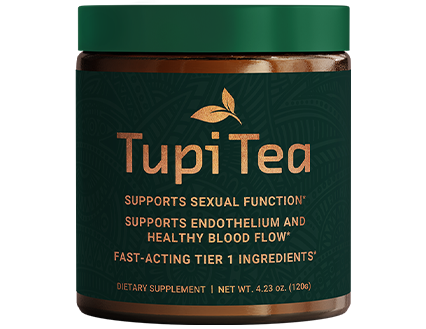
U.S. Scientists Discover Secret For Stamina & Virility At Any Age , Ingredients That May Help: bluecheck Support a healthy libido, bluecheck Support healthy stamina, bluecheck Support adequate nitric oxide production
How does age affect the prevalence of ED in Australia?
Introduction
Erectile Dysfunction (ED) is a common condition that can significantly affect a man’s quality of life and is closely related to age. Understanding how age influences the prevalence of ED is essential for developing effective public health strategies, preventive measures, and treatment options. This comprehensive analysis explores the relationship between age and the prevalence of ED in Australia, examining epidemiological data, risk factors, age-related changes in physiology, and implications for management and public health.
Epidemiology of ED in Australia
General Prevalence
ED affects a substantial proportion of men in Australia. According to various studies, the prevalence of ED increases with age:
- Men aged 18-39: Approximately 8-10% experience some form of ED.
- Men aged 40-49: Prevalence rises to around 20%.
- Men aged 50-59: About 40% of men are affected.
- Men aged 60-69: Prevalence increases to 50-60%.
- Men aged 70 and above: Up to 70% of men experience ED.
Age-Related Trends in ED
Younger Adults (Aged 18-39)
- Lower Prevalence: ED is relatively rare among younger adults but is often linked to psychological factors such as anxiety, stress, and depression.
- Lifestyle Factors: Poor lifestyle choices, including smoking, excessive alcohol consumption, and drug use, can contribute to ED in this age group.
- Early Indicators: ED in younger men can sometimes indicate underlying health issues, such as diabetes or cardiovascular problems, that require attention.
Middle-Aged Adults (Aged 40-59)
- Increasing Prevalence: The prevalence of ED increases significantly in middle-aged men, often due to a combination of psychological and physiological factors.
- Chronic Health Conditions: Conditions such as hypertension, diabetes, obesity, and metabolic syndrome become more common in this age group and are significant risk factors for ED.
- Hormonal Changes: A gradual decline in testosterone levels, known as andropause, can contribute to ED.
- Psychosocial Factors: Relationship issues, career stress, and mental health conditions can also play a role.
Older Adults (Aged 60 and Above)
- High Prevalence: ED is highly prevalent among older adults, with up to 70% of men aged 70 and above affected.
- Physiological Changes: Age-related changes in vascular health, nerve function, and hormonal levels significantly contribute to the high prevalence of ED in this age group.
- Comorbidities: Older adults often have multiple comorbidities, including cardiovascular disease, diabetes, and prostate issues, all of which increase the risk of ED.
- Medication Use: The use of multiple medications (polypharmacy) to manage chronic conditions can have side effects that contribute to ED.
Age-Related Changes in Physiology
Vascular Health
- Atherosclerosis: The buildup of plaques in the arteries (atherosclerosis) is more common with aging and reduces blood flow to the penis, making it difficult to achieve and maintain an erection.
- Endothelial Dysfunction: Aging can impair the function of the endothelium (lining of blood vessels), reducing the production of nitric oxide, which is essential for vascular relaxation and erection.
Hormonal Changes
- Testosterone Levels: Testosterone levels decline gradually with age, which can reduce libido and contribute to ED. This decline is part of a condition known as late-onset hypogonadism or andropause.
- Other Hormones: Changes in levels of other hormones, such as prolactin, thyroid hormones, and cortisol, can also affect erectile function.
Nerve Function
- Neuropathy: Age-related nerve damage (neuropathy) can affect the transmission of signals from the brain to the penile muscles, which is essential for achieving an erection. Conditions like diabetes can exacerbate this problem.
Muscular Changes
- Pelvic Floor Muscles: The strength and function of pelvic floor muscles decline with age, which can impact the ability to maintain an erection.
Psychological and Social Factors
Mental Health
- Depression and Anxiety: The prevalence of depression and anxiety can increase with age, and these conditions are strongly associated with ED.
- Performance Anxiety: Fear of sexual failure and reduced confidence can lead to ED, particularly in men who have experienced previous difficulties.
Relationship Dynamics
- Long-Term Relationships: Changes in relationship dynamics, such as decreased intimacy and communication issues, can contribute to ED in older men.
- Loss of Partner: The loss of a partner or spouse can have significant emotional and psychological impacts that contribute to ED.
Public Health Implications
Awareness and Education
- Public Health Campaigns: Raising awareness about the impact of aging on ED and promoting healthy lifestyles can help reduce the prevalence of ED in older men.
- Educational Programs: Providing education about the importance of cardiovascular health, hormone balance, and mental well-being in preventing ED.
Screening and Prevention
- Routine Screenings: Implementing routine screenings for ED in older men can facilitate early diagnosis and intervention. Screening should include assessments for cardiovascular health, diabetes, and hormonal levels.
- Preventive Measures: Encouraging lifestyle modifications such as regular exercise, a balanced diet, smoking cessation, and moderation of alcohol consumption to reduce the risk of ED.
Management Strategies
Lifestyle Modifications
- Exercise: Regular physical activity improves cardiovascular health, increases blood flow, and can enhance erectile function. Weight-bearing exercises can also boost testosterone levels.
- Diet: A diet rich in fruits, vegetables, whole grains, and lean proteins supports overall health and reduces the risk of ED.
- Smoking Cessation: Quitting smoking improves vascular health and erectile function.
- Alcohol Moderation: Limiting alcohol intake can prevent its negative effects on erectile function.
Medical Treatments
- Oral Medications: Phosphodiesterase type 5 inhibitors (PDE5 inhibitors) such as sildenafil (Viagra), tadalafil (Cialis), and vardenafil (Levitra) are effective treatments for ED.
- Hormone Replacement Therapy: Testosterone replacement therapy may be considered for men with low testosterone levels.
- Psychological Counseling: Cognitive-behavioral therapy (CBT) and other forms of counseling can address psychological factors contributing to ED.
- Surgical Options: Penile implants and vascular surgery are options for men who do not respond to other treatments.
Integrated Care
- Multidisciplinary Approach: Collaboration between primary care physicians, urologists, endocrinologists, cardiologists, and mental health professionals is essential for comprehensive management.
- Patient Education: Educating patients about the underlying causes of ED and available treatment options empowers them to make informed decisions about their care.
Research and Future Directions
Longitudinal Studies
- Aging and ED: Conducting longitudinal studies to track changes in erectile function over time and identify predictors of ED in aging men.
- Interventions: Evaluating the long-term effectiveness of various interventions, including lifestyle modifications and medical treatments, in preventing and managing ED in older men.
Technological Advancements
- New Treatments: Developing new pharmacological and non-pharmacological treatments for ED that address age-related changes in physiology.
- Telemedicine: Utilizing telemedicine to improve access to care and provide ongoing support for men with ED, particularly in rural and remote areas.
Conclusion
Age is a significant factor influencing the prevalence of Erectile Dysfunction (ED) in Australia. The risk of ED increases with age due to a combination of physiological changes, chronic health conditions, and psychological factors. Understanding these age-related trends is crucial for developing effective prevention and management strategies. Public health initiatives, lifestyle modifications, medical treatments, and ongoing research are essential components of a comprehensive approach to addressing ED and improving the quality of life for men in Australia.
References
- Australian Institute of Health and Welfare (AIHW). “Erectile Dysfunction.” Canberra: AIHW.
- Mayo Clinic. “Erectile Dysfunction (ED).” Available from: https://www.mayoclinic.org/
- NHS. “Erectile Dysfunction (Impotence).” Available from: https://www.nhs.uk/
- American Urological Association. “Erectile Dysfunction.” Available from: https://www.auanet.org/
- Cleveland Clinic. “Erectile Dysfunction.” Available from: https://my.clevelandclinic.org/
- National Institutes of Health (NIH). “Erectile Dysfunction.” Available from: https://www.niddk.nih.gov/
- WebMD. “Erectile Dysfunction (ED).” Available from: https://www.webmd.com/
- National Health and Medical Research Council (NHMRC). “Clinical Guidelines for Erectile Dysfunction.” Canberra: NHMRC.
- Diabetes Australia. “Erectile Dysfunction and Diabetes.” Available from: https://www.diabetesaustralia.com.au/
- Heart Foundation. “Erectile Dysfunction and Cardiovascular Health.” Available from: https://www.heartfoundation.org.au/
This detailed content covers how age affects the prevalence of ED in Australia, including epidemiological data, risk factors, physiological changes, and management strategies. Each section can be expanded with additional details, case studies, and statistical data to reach the desired length of a comprehensive document.

